Today’s premise isn’t very complicated.
The seventh-generation 911 Turbo, driven here in S trim for the full 641bhp monty, moves Porsche’s famous export away from its recent roost as an ICBM-quick but more long-legged device and to somewhere sharper and considerably harder. Somewhere where its road-racer roots are once again threatening to break through; where its supercar-slaying credentials have, in the 45 years since the original 3.0-litre 930 Turbo was born, never felt so strong.
Meanwhile, McLaren, with its new GT, has given us a machine that in the metal and on paper shrieks supercar but is really, according to CEO Mike Flewitt, “designed for distance” and “refines the notion of a grand tourer in a way that only a McLaren could”. Clearly there’s an element of convergence here. For prospective owners, the two cars – mighty mid-engined Mac and colossally boosted 911 – now cruise in the same airspace for the first time. To make matters all the more intriguing, only £7030 separates them.
So which is the more rounded, which is sweeter to drive, and which one should you buy if you’re lucky enough to have £160,000 burning a hole in your Swiss bank account?
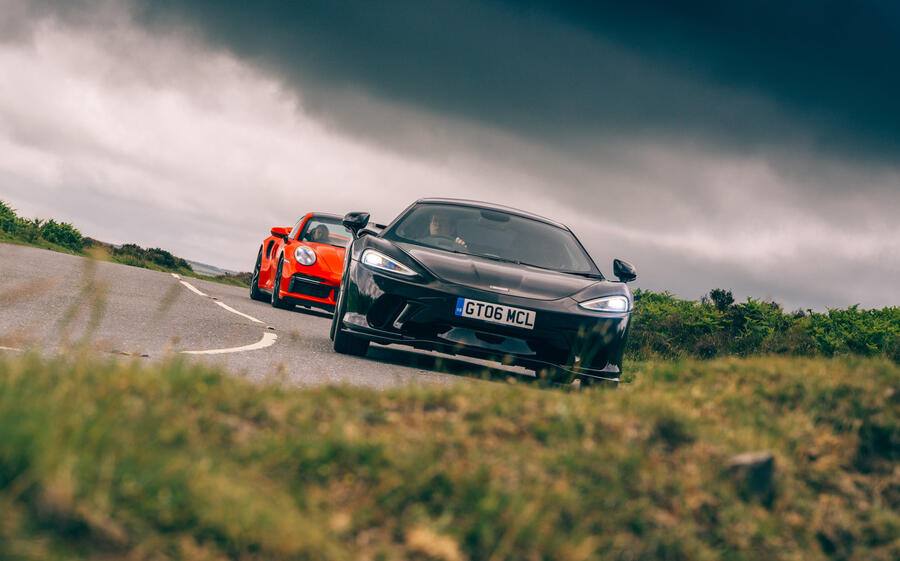
Our day of finding out begins at McLaren’s service HQ, which is hidden away in Old Woking, just around the corner from the premises where the Porsche-engined Formula 1 cars were built in the early 1980s. It’s my first chance to see the McLaren GT up close.
The ducktail is sensational, but the glossy new multi-spoke wheels – at 21in, the largest ever fitted to any McLaren – don’t confer much in the way of the marque’s hallmark function-over-form thinking and the high snout still looks awkward. The nose has been styled this way not only to give the car fuller and more traditional GT proportions but also to lay the groundwork for the 150-litre frunk and to lift the splitter higher than usual above the road.
Approach angles aren’t something we often talk about with supercars, because they matter more to Land Rovers than Lamborghinis, but usability is central to the GT’s brief and McLaren is proud enough to put into writing the 10deg on offer. And you know what? It works. Over five days’ hard grind, not once will the car ground itself on speed bumps or the like, which is unheard of for mid-engined exotics. In fact, merely knowing that body won’t sickeningly connect with road relaxes you in town, and with the nose lift activated, the GT matches an Mercedes-Benz E-Class for ride height. Is the basking-shark mug worth it? Hmm. I’m still not sure.
Clearly this is a curious car, and the GT’s shaky start continues as we roll out of town with 170 miles ahead of us. Exmoor is the destination plugged into McLaren’s new infotainment system, for our rendezvous with Matt Saunders and a Porsche so pumped-up and vibrant you have to wonder whether it can already smell victory. Back inside the GT, it’s obvious what McLaren has tried to do, but if your corporate persona is one of austere motorsport-honed purity, upping the luxury quotient doesn’t always come naturally.
The trio of textures for the beautifully machined gearshift paddles would look at home in an AMG Mercedes, but chintz seems so very out of place in a McLaren. It’s a similar story with the satin-effect plastic trim on the steering wheel and piano-black fascia of the central console housing the ‘Active’ dials that, as in every McLaren, switch up testosterone levels for chassis and powertrain. None of it works quite as well as intended. Neatly stitched leather and Alcantara abound and the knurled aluminium for the ventilation controls are convincing, but the vibe feels a touch inauthentic, which is about as un-McLaren as it gets.
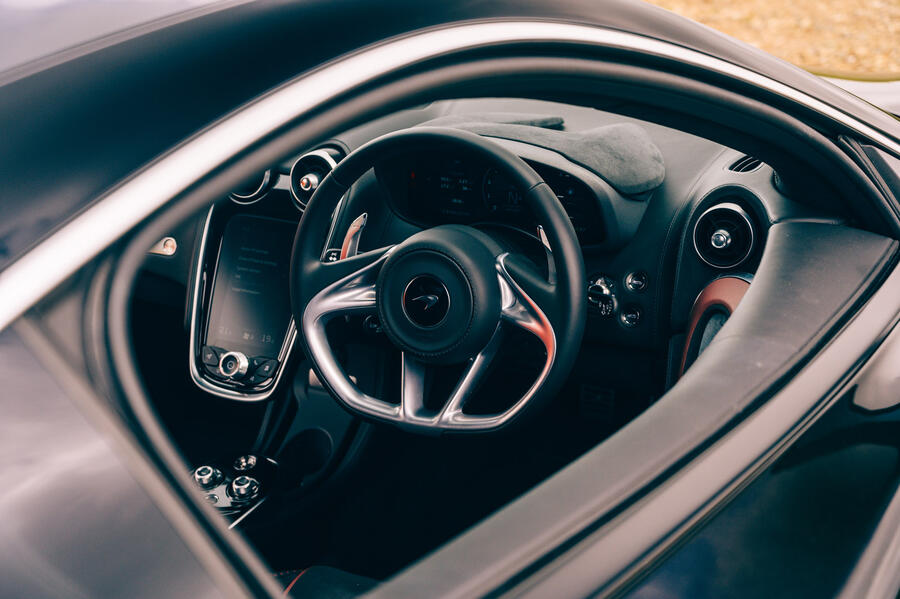
But how else, then, do you go about creating a McLaren GT? Not many manufacturers are so guilty of making incestuously close variations of essentially the same car as McLaren, and all the major ingredients are recognisable. At the heart of the GT, hidden beneath the new and impressively long storage compartment, sits the same 3994cc V8 found in the 720S, albeit fitted with smaller and more responsive turbochargers. In terms of power, it slots the car into the gap between the quickest Sports Series models and the Super Series 720S, and 612bhp to go with 465lb ft certainly sounds very serious for a supposedly more laid-back Mac.
The seven-speed dual-clutch ’box we’re also familiar with, although McLaren decided not to fit its supple cross-linked hydraulic suspension from the 720S, opting instead for a retuned version of the more traditional set-up from the 570S. The anti-roll bars are at least bespoke to the GT and, instead of merely reacting to the road surface as it bubbles away beneath the car, when that surface demonstrably changes, the dampers make an assessment based on 10 metres or so of travel and adjust their broader characteristics accordingly. It is, McLaren says, predictive.
Less predictable is what happens next in the context of this test, not least because I’ve warmed to the GT rather a lot over those 170 miles. Whisper it, but maybe an overall win now looks possible. The car is laughably good on the motorway, even though it wants to ghost up into triple-digit speeds constantly. At speed, the otherwise booming V8 drops to a simper and the cabin is then noticeably quieter than with other McLarens, thanks also to the suppression of wind and road roar.
The body seems to slip through the air so deftly, despite the brutally sharp Tornado-style intakes looming in the wing mirrors, and while the new electric seats are mounted a touch high, they’re also voluptuous, soft and supportive. You then get all the benefits of the MonoCell II carbonfibre monocoque, which has been modified (and the exhaust system routed lower) to incorporate the 420-litre rear luggage bay. The tub’s immense rigidity allows for spring rates whose softness even the most synaptically challenged passenger couldn’t fail to appreciate.
The low-cut scuttle and, on this car, integrated panoramic roof then flood the cabin with light, volume and feel-good factor. The effect may not be quite so pronounced as with the 600LT, but in the GT you really do feel perched on an arrowhead, with the road rapidly scrolling away below. I wonder why it has taken this long for someone to make an attempt at developing a genuine mid-engined GT. Done well, the layout clearly provides a sublime sense of motion and visibility.
So I’m feeling fresh when I clap eyes on the 911 Turbo S that Saunders has driven to Exmoor. And, well, wow. It looks incredibly purposeful, and if the Mac’s exterior design is fussy in vaguely die-cast fashion, the 3.7-litre Porsche’s butch form is straight monolithic. Comfortably shorter than the GT, the 911 is only a touch narrower and then taller, but its shocked expression and the delirious curves of those rear arches, which sit almost horizontal at one point, mean it outguns the supercar for presence. How on earth did that happen?

The hardware of the Turbo S is every bit as serious. While it lacks a carbonfibre tub and doublewishbone suspension, instead using MacPherson struts with a multi-link arrangement for the stocky rear axle, its wheel-and-tyre package is much more substantial, with 315-section rear rubber compared with the Mac’s 295-section Pirellis. It has thumping brakes (with 10-piston front calipers), four-wheel drive (with water now cooling the front diff and tougher clutches) and, in terms of brute force, it’s simply no contest. The McLaren’s 465lb ft output peaks satisfyingly high at 5500rpm, but the Turbo S is channelling 590lb ft at only 2500rpm through its reinforced PDK gearbox. Both, it must be said, are faster than you would ever need on road or track, but only one has shredded your mind before the crank has really got going.
When it’s time to swap, the Porsche then wins a small but meaningful victory. Without the dihedral doors and chunky structural sills, it’s less awkward to slip into. Hardly the most exciting revelation, but one that matters for GT cars, as does the fact that, with rear-wheel steering, less metal between the axles and more lock on offer, the Porsche’s turning circle is also compact. Once inside, it’s then possible to set yourself lower than in the McLaren (again, who’d have thought?) and, as for the fittings, switchgear and displays, the German car also pulls off ‘functional luxury’ with more conviction. The GT still feels more special, but the Turbo S has an irresistible charm shared with basic 911s, which stems from the strangely upright windscreen and bubble-like glasshouse. This Porsche may pack active aero, seriously stiff suspension and performance that really can induce migraines, but it still greets you with a warm smile.
And, perhaps, a deceptive smile. It doesn’t take long to realise that, in coldly objective terms, the Turbo S does something of a dynamic demolition job on the McLaren, leaving it feeling… old-fashioned. Given the magnificence of the 600LT, this isn’t the predicted outcome. But the GT’s electrohydraulic steering is both lighter and, despite possessing the same propensity to fidget, more heavily filtered than that of its close genetic relation. This is true to the extent that on Exmoor’s knobbled roads, the electromechanical set-up in the Porsche actually gives the driver fractionally more to chew on.
At 1530kg, the McLaren is also some 110kg lighter than its foe but it somehow lacks the stunning alacrity of the 911 Turbo S. Maybe that’s just as well, because this new GT appears to pick up understeer earlier than any other McLaren. It’s not by any means a car that lacks grip when driven fluidly, but that glorious sense of the front axle being intricately and implacably welded to the road has left the room – and the 911, with its tight body control, has darted in and then darted off into the middle distance.

At this point, I’ve love to tell you that, beyond its bewildering ability, the Porsche lacks soul and struggles to establish any real dialogue with the driver. But this simply isn’t true. The linearity, the reassuring heft yet surprising deftness of its responses and the tactility in its controls allow you to delve deep (inadvisably so) and uncover its playful side – the side that humours you with a cheeky quarter-turn of opposite lock; that begs you to flick it this way and that while keeping the throttle generously open; and that goads you to play chicken with physics on the brakes into tight corners. You have to be covering ground at an almost obscene lick to get this car working with maximum pliancy and panache, but do so and the new Porsche 911 Turbo S is brilliant, even if the Carrera 4S does much the same thing for a little over half the price (and, frankly, at only two-thirds of the required velocity).
So where does this leave the GT? Beaten, certainly. And yet while it clearly isn’t of the same mesmeric calibre as other McLarens, it can still beguile. It may accelerate more slowly than the ballistic 911, but where its rival bludgeons its way forth, the mid-engined car feels less encumbered, more free-spirited and accumulates speed with silky abandon. Its V8 engine suffers more from the effects of turbo lag than the dry-sump flat six in the tail of the Porsche, but it’s also peakier and more exciting to spin out, as all 612bhp takes hold of that impressively low kerb weight. The seek-and-destroy Turbo S hunts flatly through corners but the Mac is prepared to lower its guard and flows with the kind of balanced elegance that architecturally compromised cars, even ones honed to an awe-inspiring degree over the course of 45 years, can’t match. Although susceptible to brittle outbursts on rougher surfaces (felt mainly through the steering, rather than your thighs), the McLaren is also without doubt the more serene cruiser, avoiding the Porsche’s busyness underwheel and its tiresomely booming back axle.
In fact, if the McLaren disappoints, it isn’t because it is a dud. It’s because you would expect McLaren to crucify the mid-engined GT brief. Preserve the vivid steering and transparent handling, add some practicality but improve the already excellent road manners of the existing supercars. The GT possesses clever innovations that owners will appreciate, but unfortunately ride quality takes a mere half-step forward from the 570S, while involvement has goose-stepped back, leaving the car’s character feeling confused. It’s suboptimal, as Ron Dennis would say.
As for the Porsche, there’s nothing confusing about this latest 911 Turbo. McLaren may have had an off day with the GT but, in dynamics terms, the red car has dispatched the black car with shocking efficiency. I’m glad to be heading back to London in the mid-engined Mac, which comfortably wins the long-distance battle, but even this can’t disguise the fact that, both day-to-day and on your favourite roads, the Porsche is the more appealing proposition. Never mind bugs: in 2020, the 911 Turbo S kills supercars fast.
Three used turbo thrillers at a fraction of the price
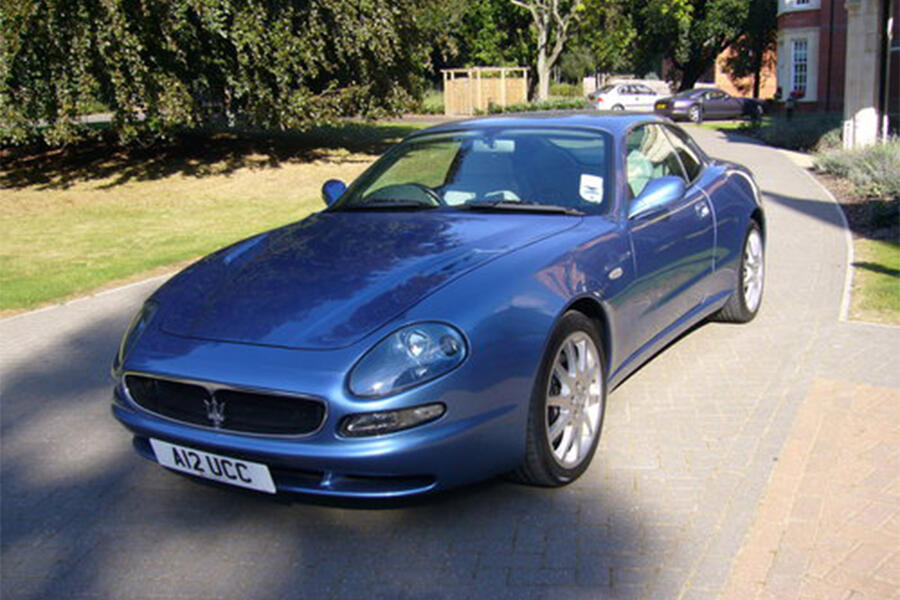
1999 Maserati 3200 GT, £15,950: The 3200 GT has aged well, and this 56,000-mile car’s rebuilt engine, adjustable suspension and well-optioned interior make it especially attractive. The snappy throttle response can make that 365bhp twin-turbo V8 a somewhat unwieldy beast, so proceed with caution.
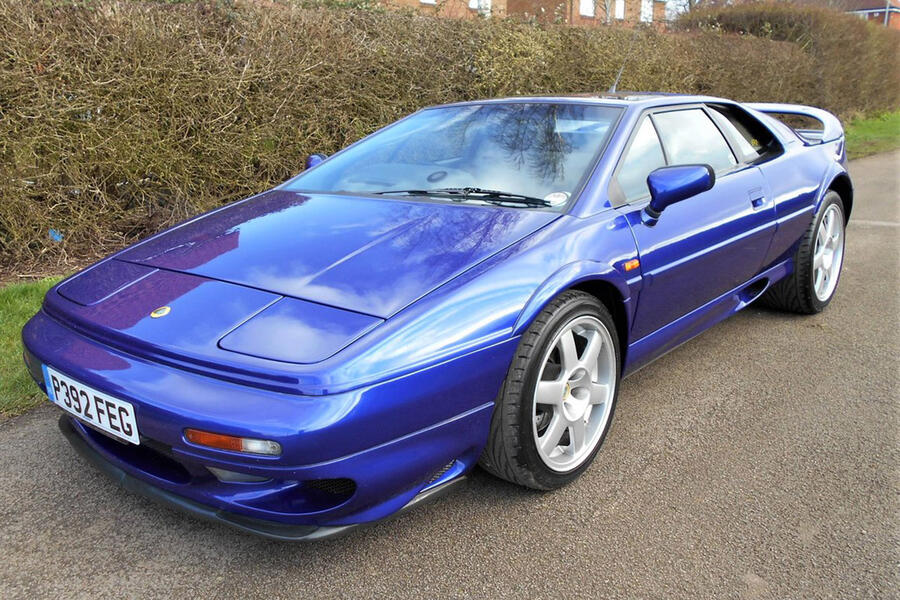
1996 Lotus Esprit V8 Turbo, £38,500: Back when McLaren had only one road car and Ford-owned Aston Martin was preoccupied mainly with building luxurious GTs, the Lotus Esprit was the definitive British supercar. The twin-turbocharged V8 version, launched in 1996, could shoot from 0-60mph in 4.4sec and hit a top speed of 175mph.

2016 BMW M4 GTS, £79,980: One of Munich’s most unhinged tyre-shredders is a perfect example of the benefits of forced induction. The twin-turbo M4 GTS offered a 67bhp advantage over the already-rapid standard car, shed 27kg of heft and could lap the Nordschleife as quickly as Porsche’s Carrera GT supercar.
READ MORE
McLaren Speedtail 2020 UK review
New McLaren Sports Series hybrid seen in production bodywork

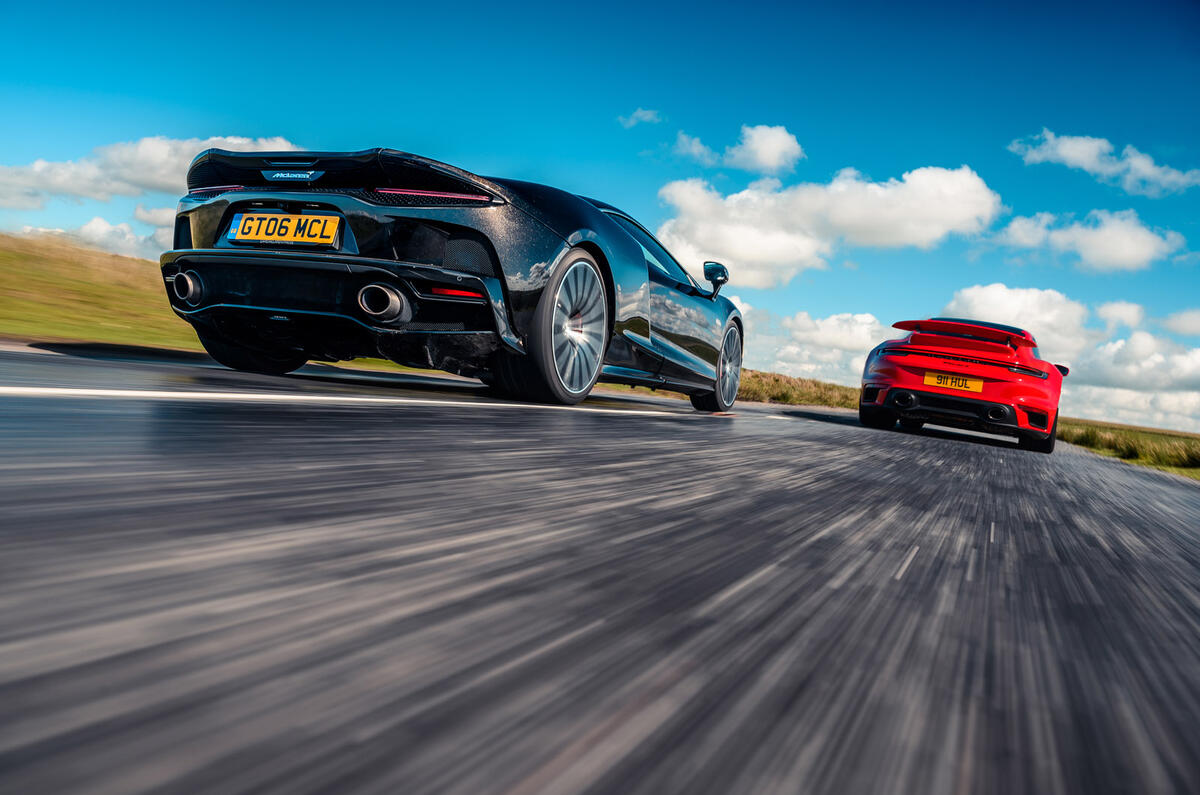
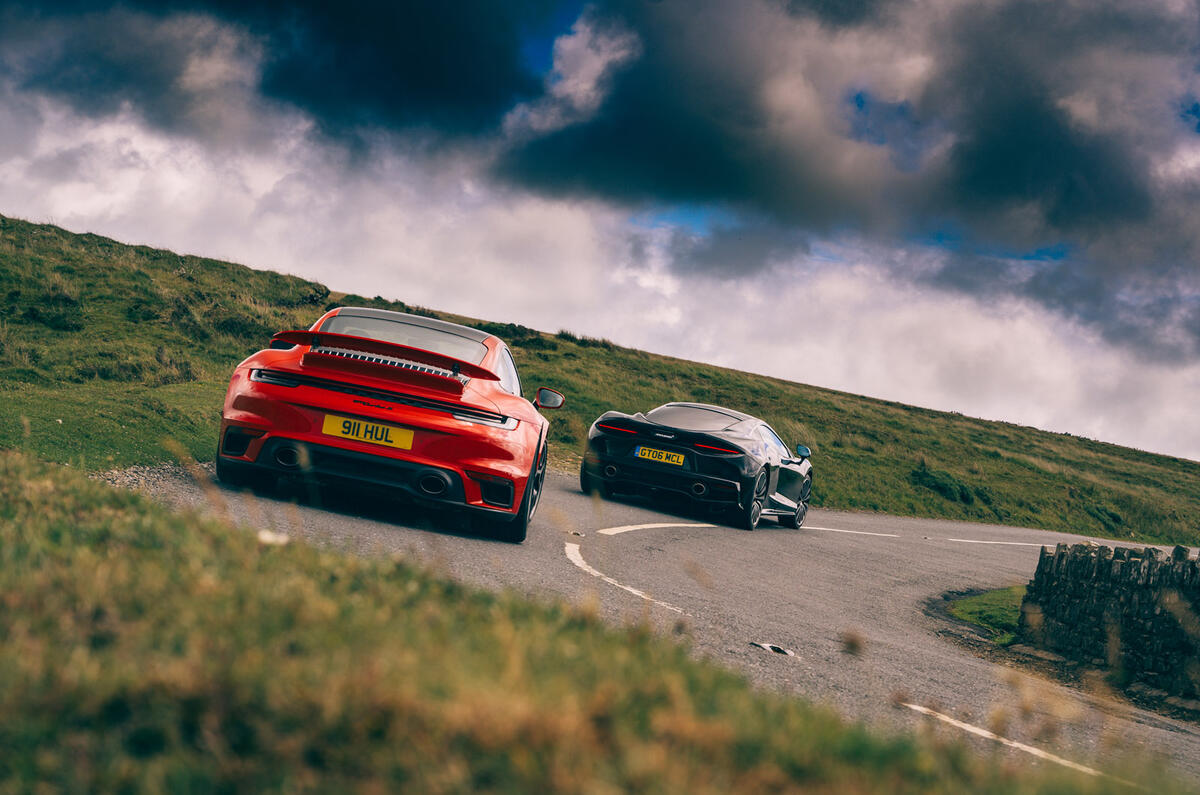
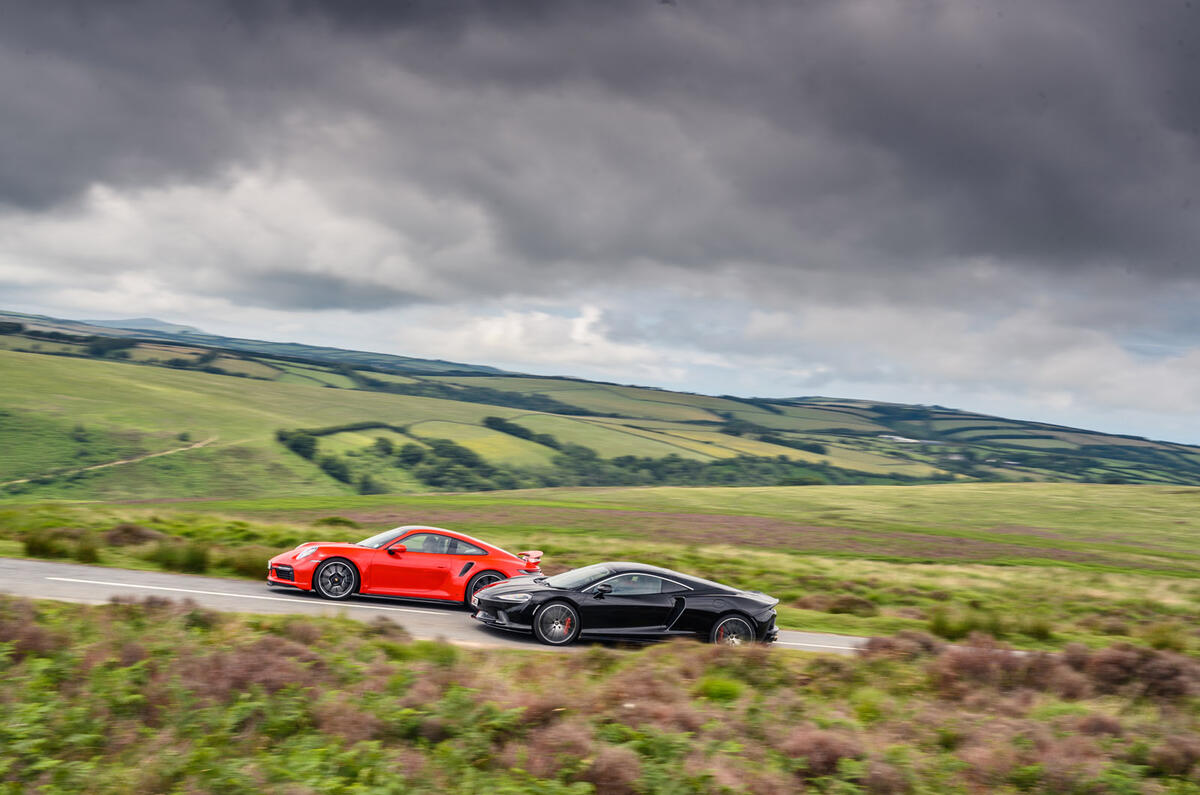
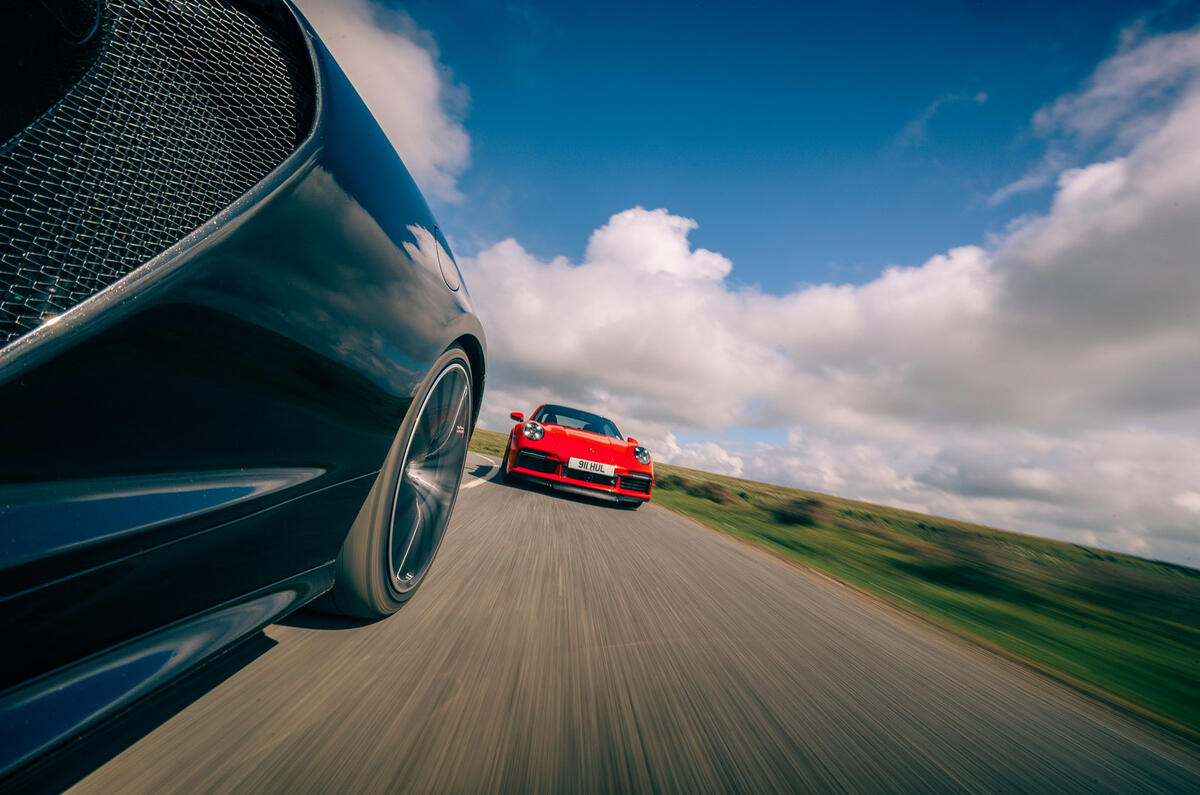
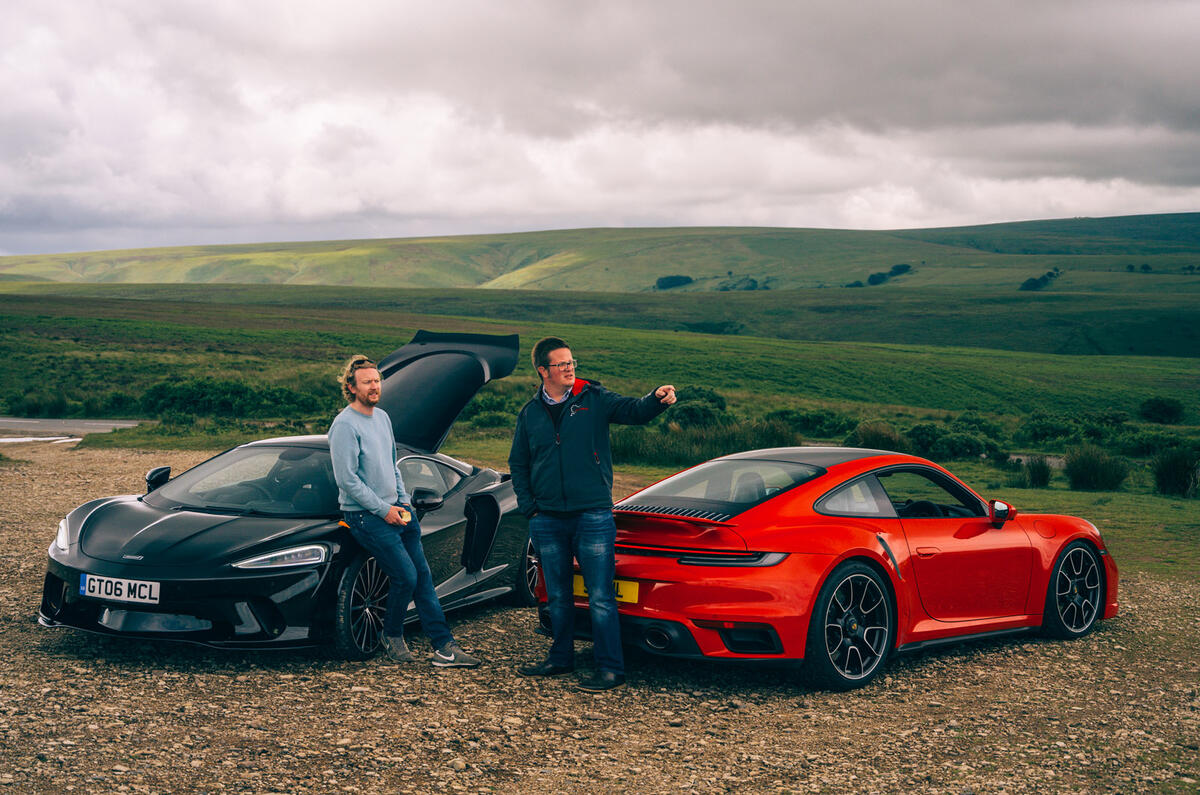
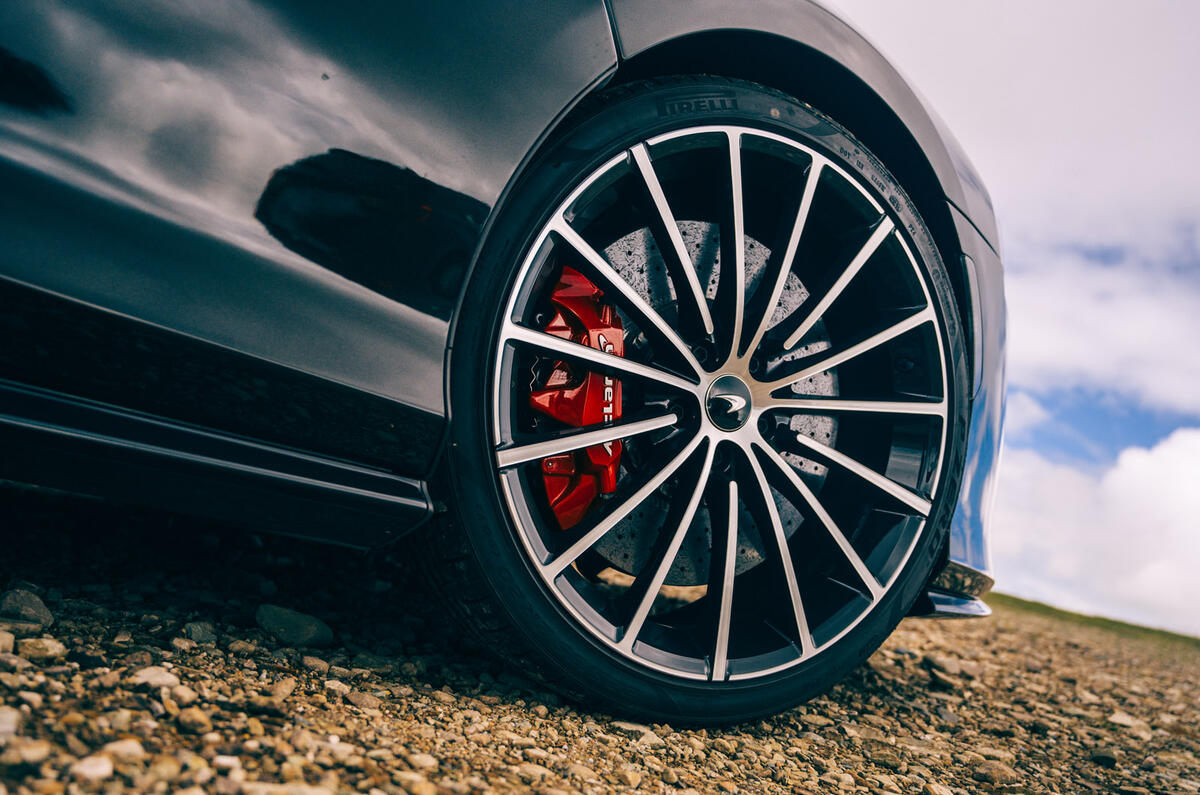
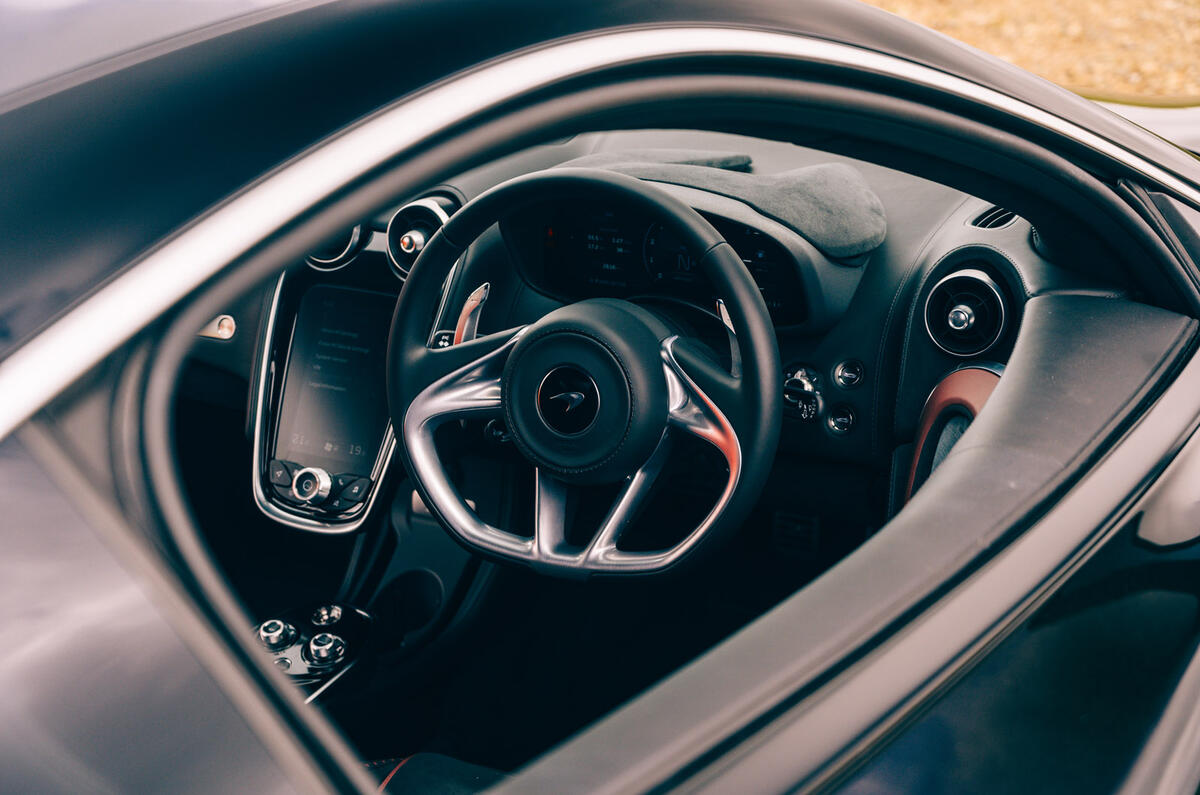

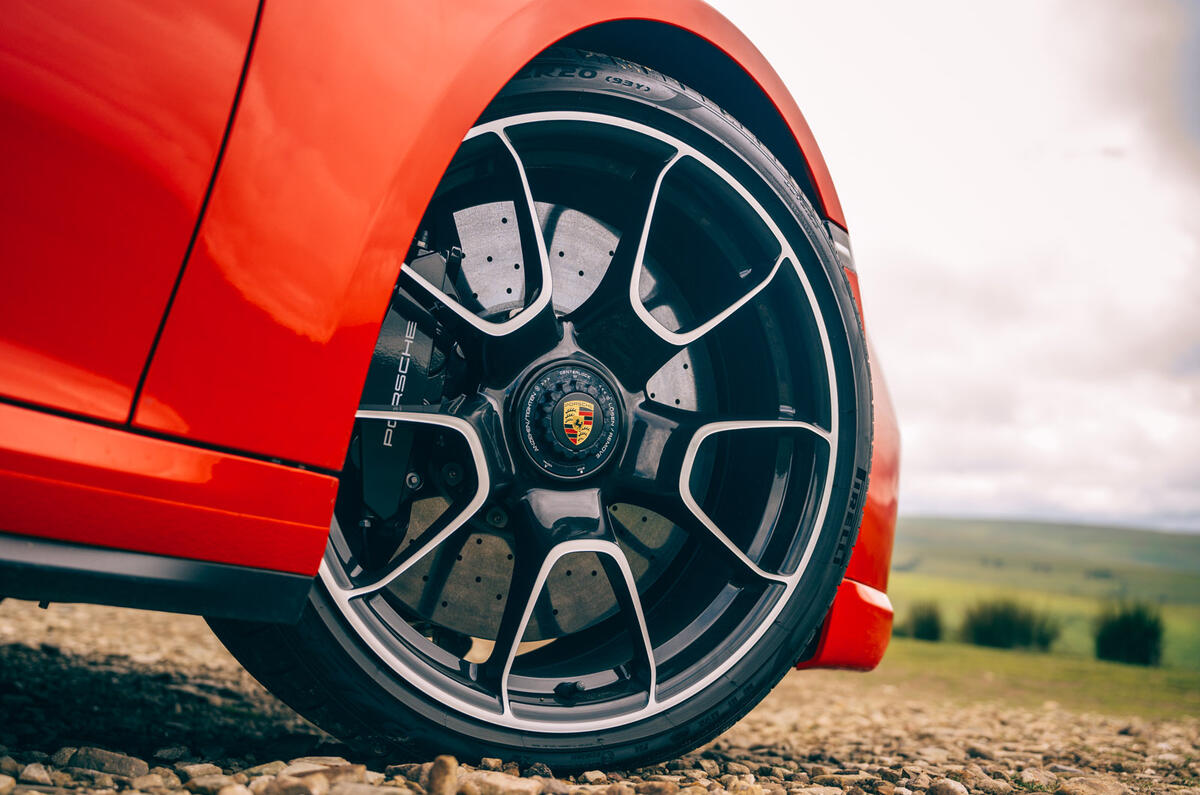
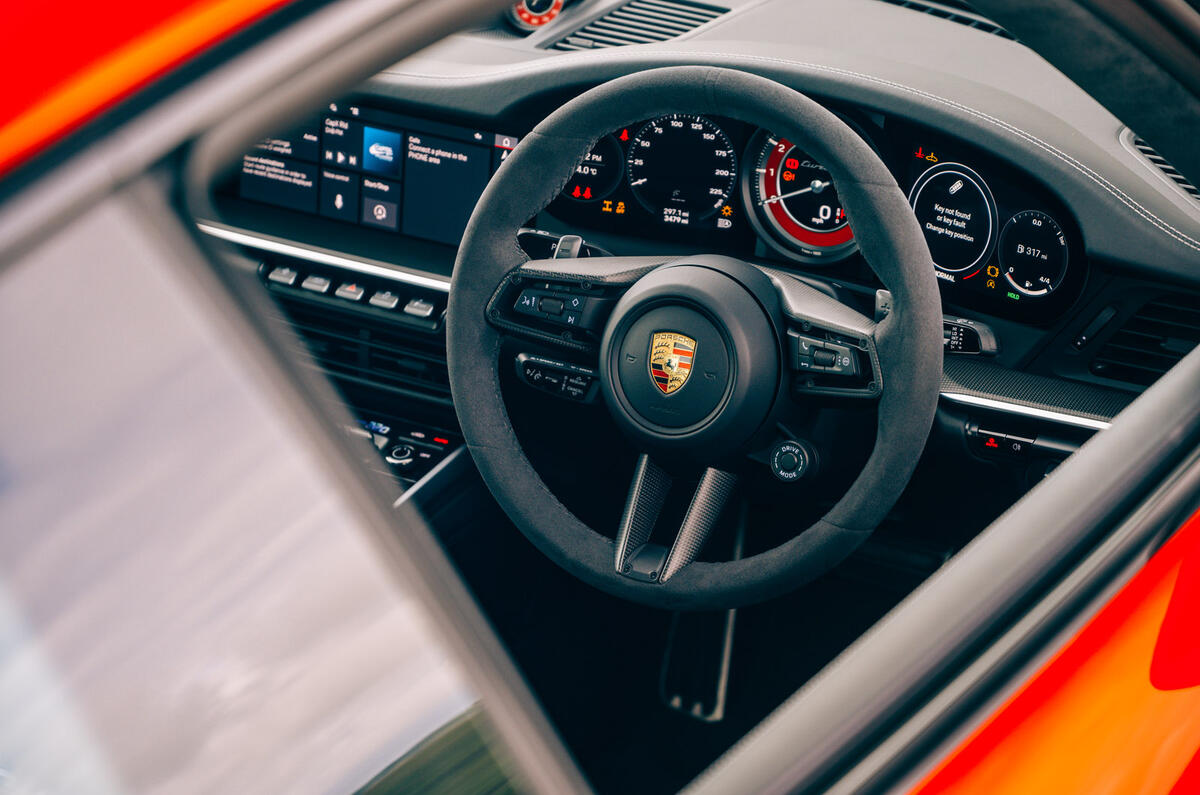
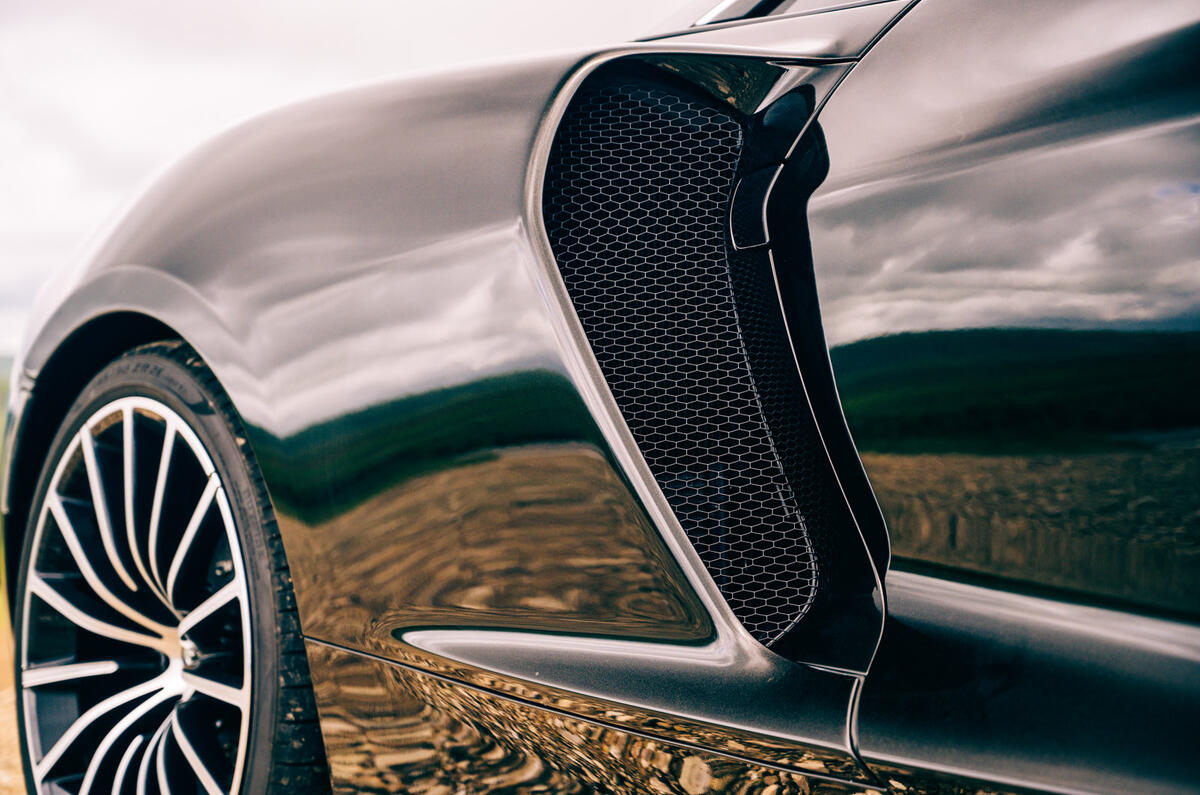
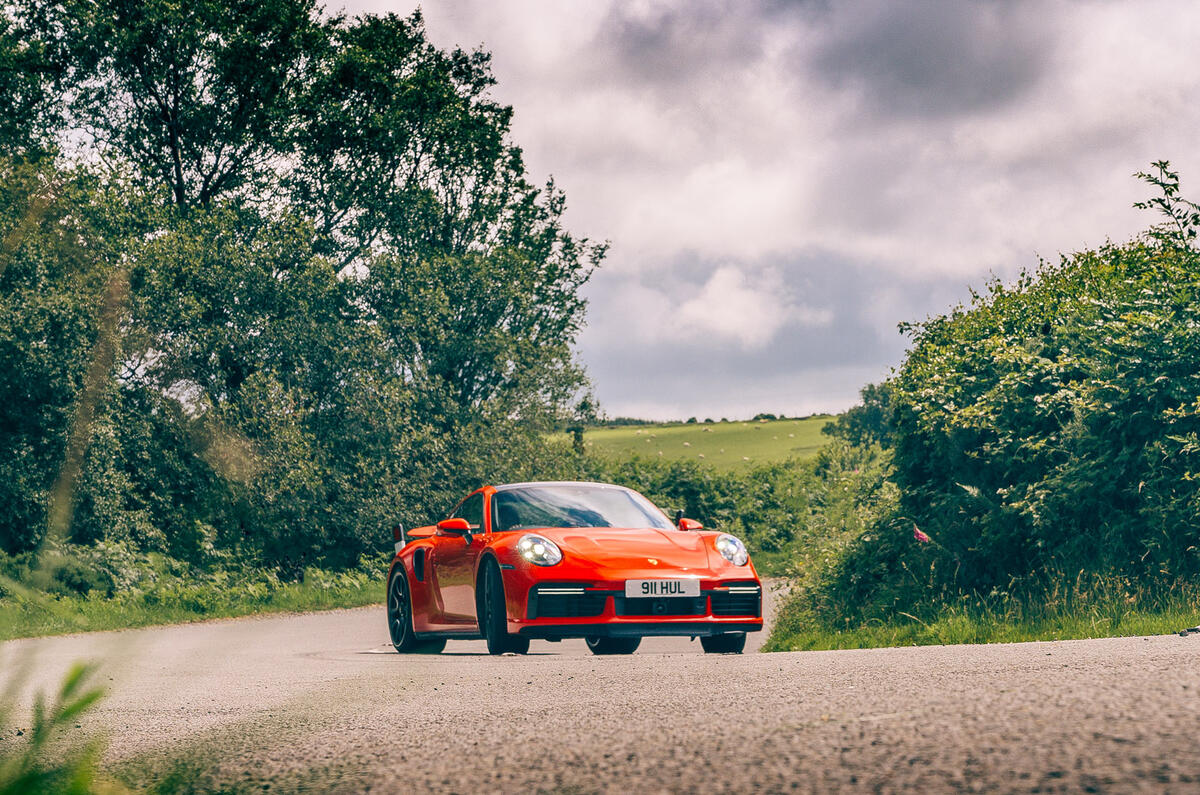
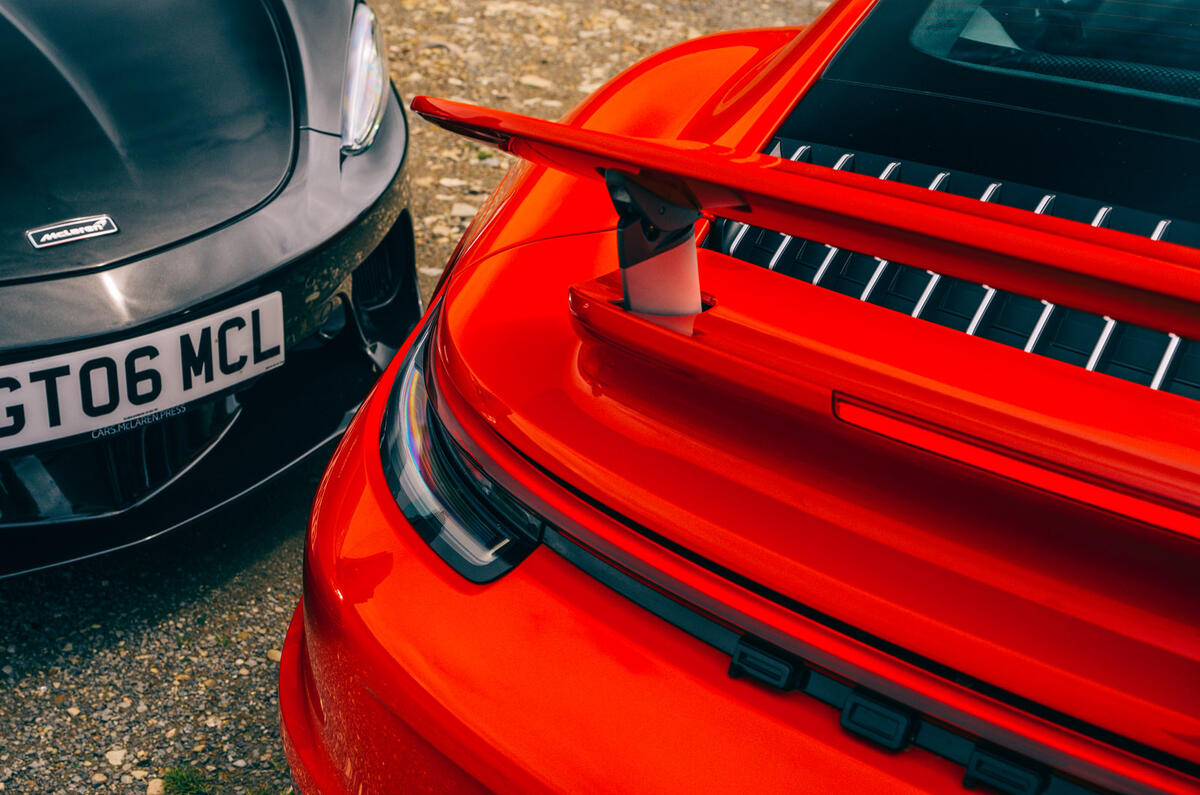
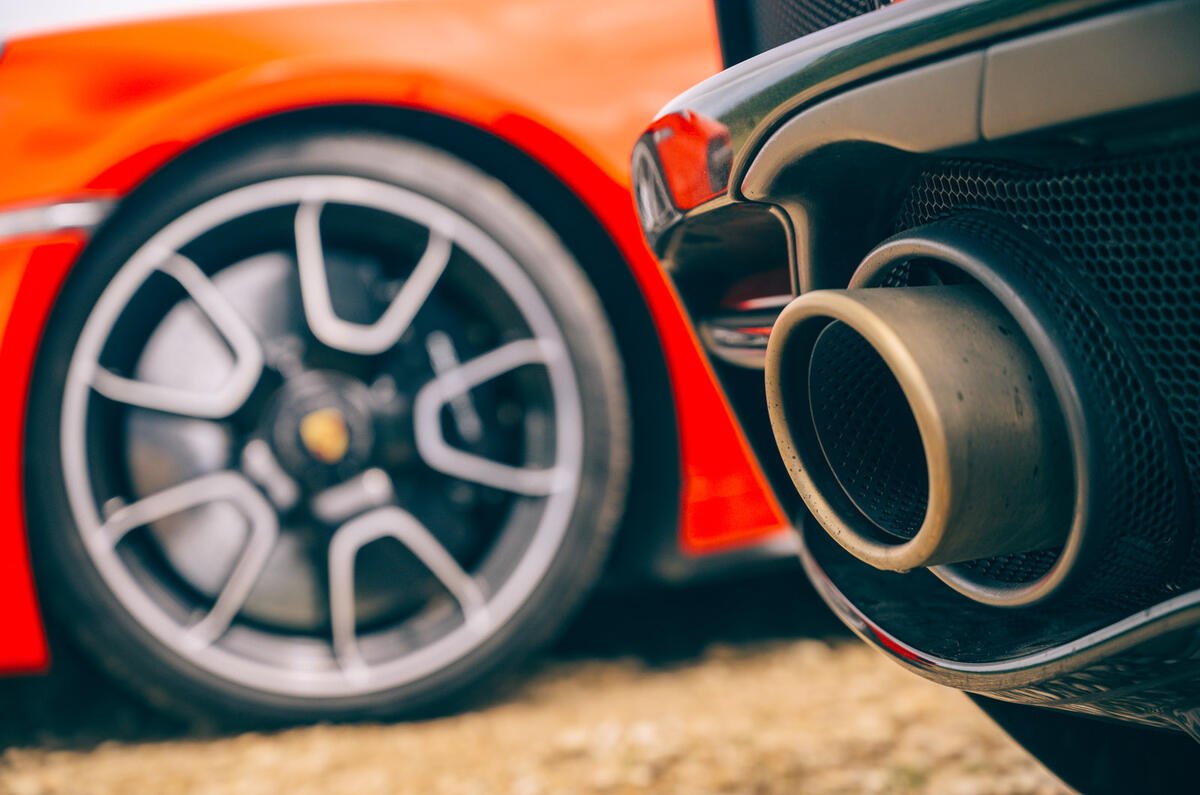
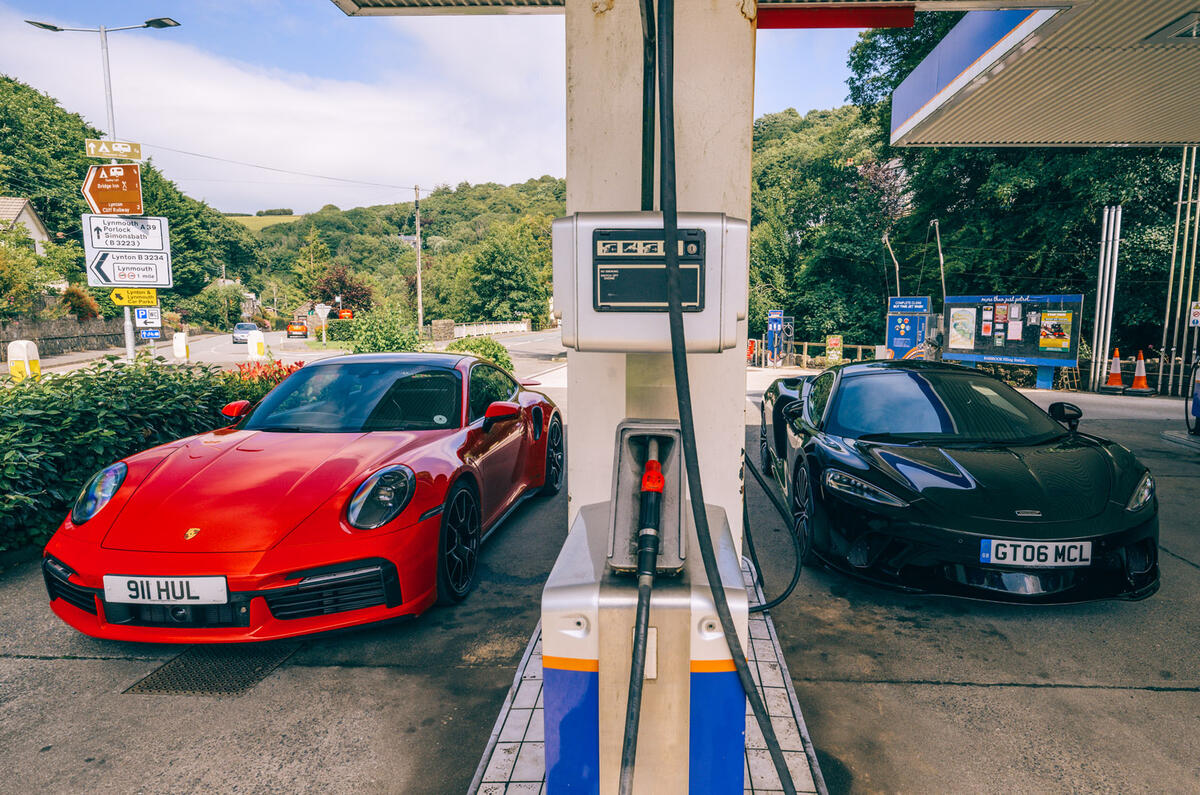
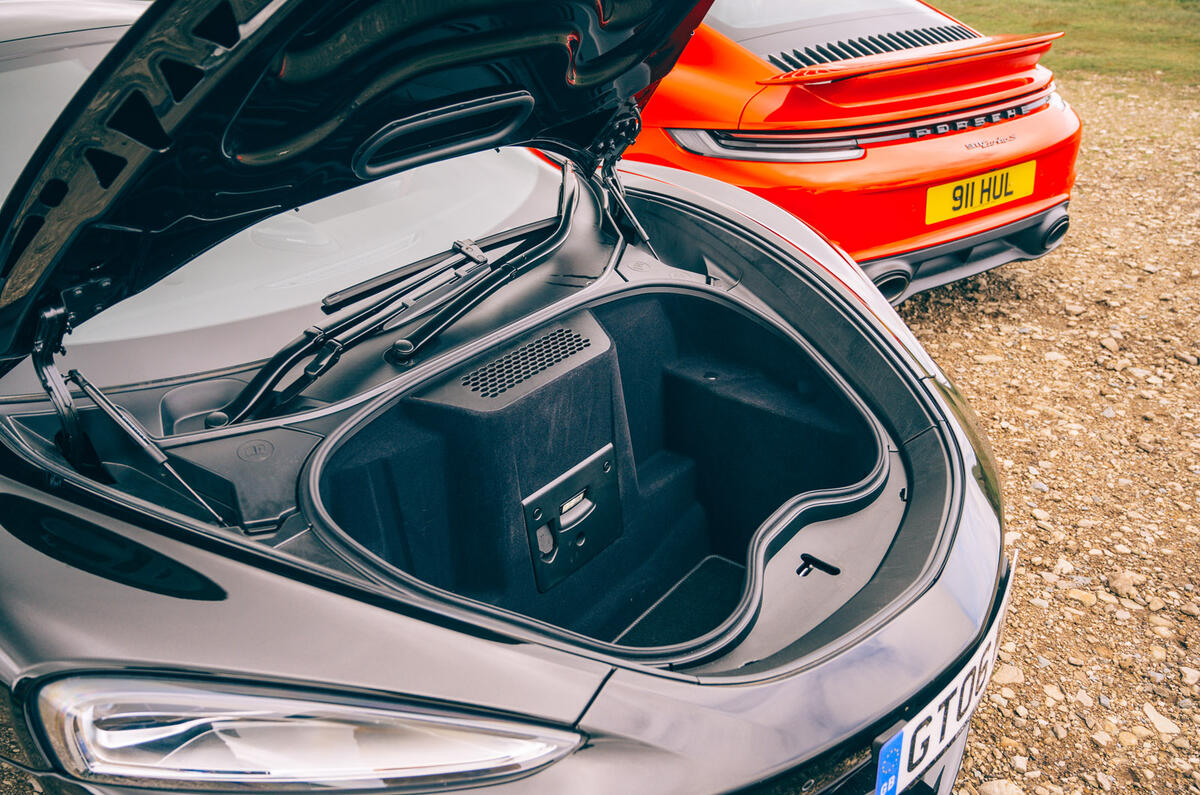

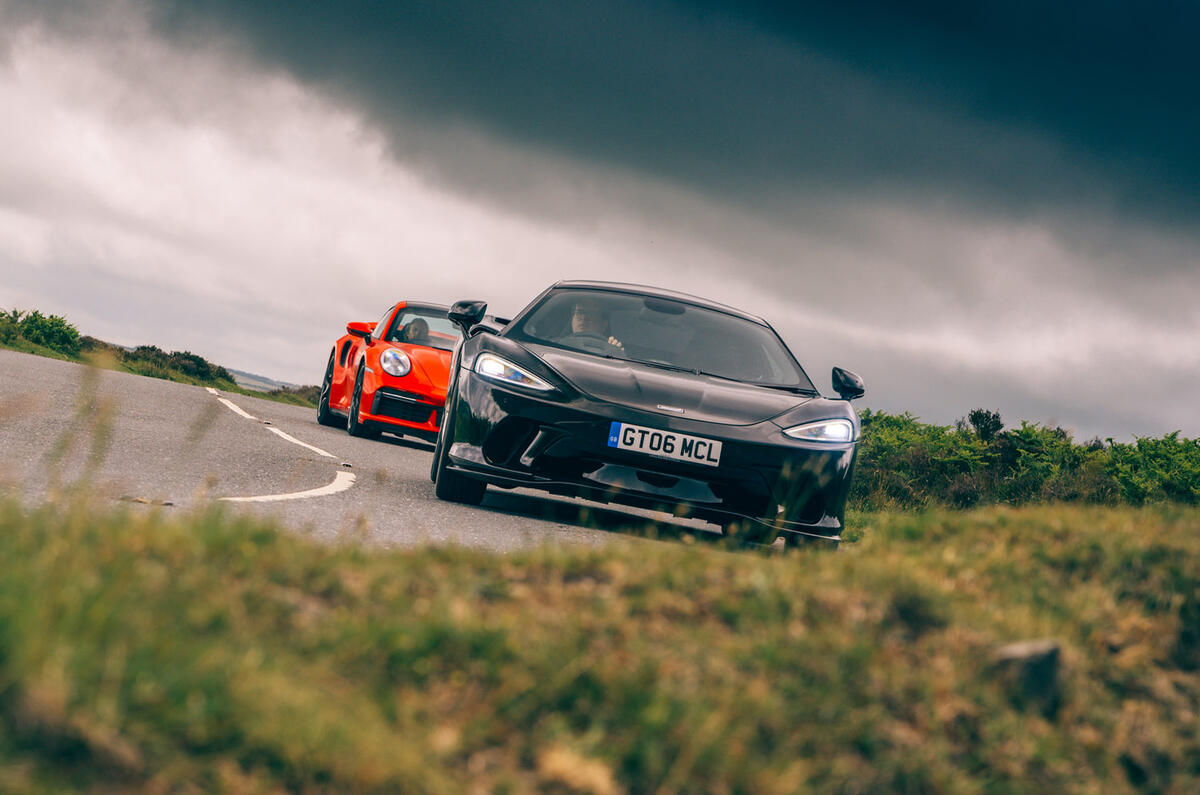

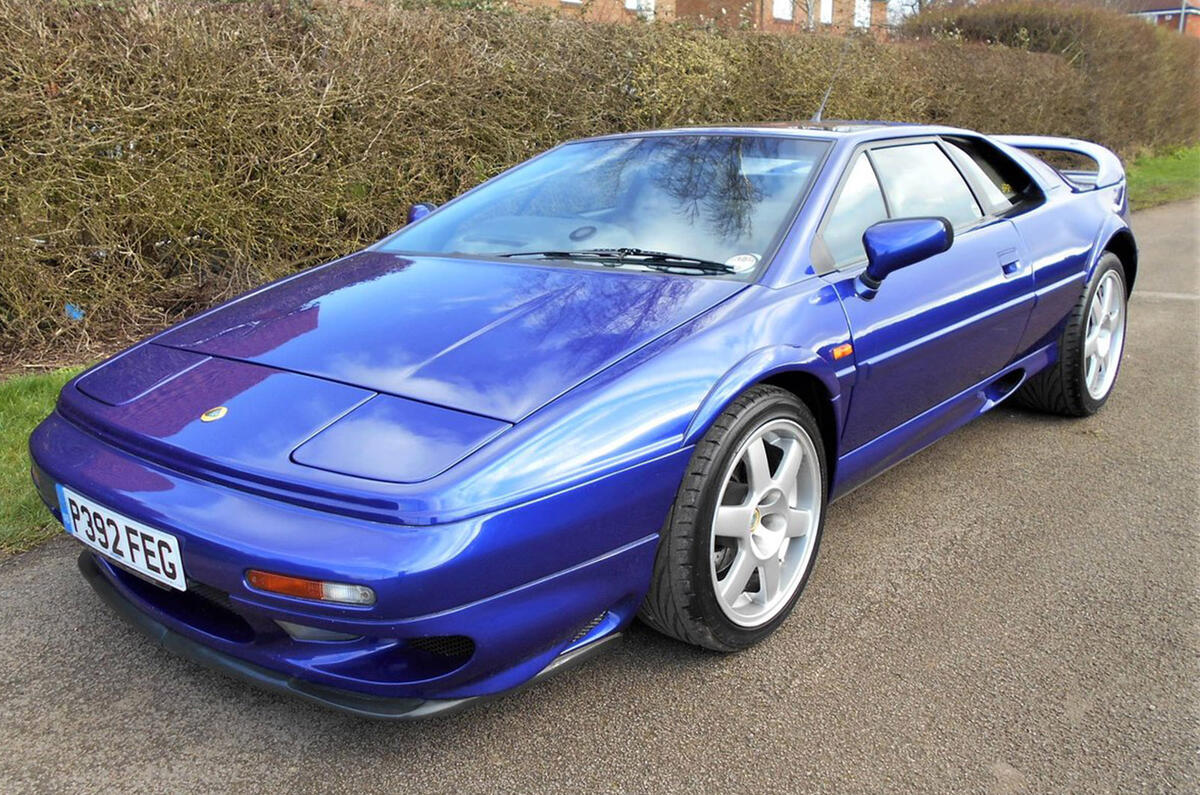

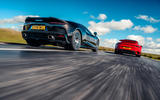




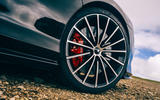

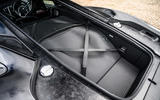


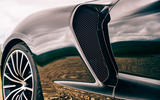




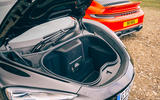


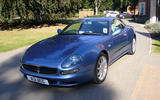








Join the debate
Add your comment
I'm happy that the new car
I'm happy that the new car dials in more driver involvement and they have reversed a trend. I had a 997.2 turbo which disappointed compared to the 996 before it and the 991 made matters worse. I sought refuge in the GT cars but this new turbo S is food for thought.
Annoying ads
Really enjoyed the article but why have Autocar included epilepsy-inducing, flickering adverts alongside the text? Really takes away from enjoyment of the content.
Reporters are such reporters...
Back in the day when 911 Turbos had hydraulic steering, manual gearboxes and were pretty raw in how their systems reacted and could be outright handful with systems turned off, they had no soul and there is no dialog with the driver. Now when it is all run by a bunch of computers, with auto box, self-steering rear wheels etc they suddenly have a soul. :-D All these comparisons are a bunch of highly subjective bs.